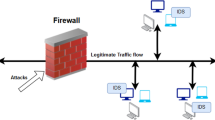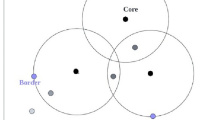Abstract
Self-organizing neural networks can be used to mimic non-linear systems. The main objective of this study is to make pattern classification and recognition on sampling information using two self-organizing neural network models. Invertebrate functional groups sampled in the irrigated rice field were classified and recognized using one-dimensional self-organizing map and self-organizing competitive learning neural networks. Comparisons between neural network models, distance (similarity) measures, and number of neurons were conducted. The results showed that self-organizing map and self-organizing competitive learning neural network models were effective in pattern classification and recognition of sampling information. Overall the performance of one-dimensional self-organizing map neural network was better than self-organizing competitive learning neural network. The number of neurons could determine the number of classes in the classification. Different neural network models with various distance (similarity) measures yielded similar classifications. Some differences, dependent upon the specific network structure, would be found. The pattern of an unrecognized functional group was recognized with the self-organizing neural network. A relative consistent classification indicated that the following invertebrate functional groups, terrestrial blood sucker; terrestrial flyer; tourist (nonpredatory species with no known functional role other than as prey in ecosystem); gall former; collector (gather, deposit feeder); predator and parasitoid; leaf miner; idiobiont (acarine ectoparasitoid), were classified into the same group, and the following invertebrate functional groups, external plant feeder; terrestrial crawler, walker, jumper or hunter; neustonic (water surface) swimmer (semi-aquatic), were classified into another group. It was concluded that reliable conclusions could be drawn from comparisons of different neural network models that use different distance (similarity) measures. Results with the larger consistency will be more reliable.
Similar content being viewed by others
References
Acharya, C., Mohanty, S., Sukla, L. B., & Misra, V. N. (2006). Prediction of sulphur removal with Acidithiobacillus sp. using artificial neural networks. Ecological Modelling, 190(1–2), 223–230.
Almasri, M. N., & Kaluarachchi, J. J. (2005). Modular neural networks to predict the nitrate distribution in ground water using the on-ground nitrogen loading and recharge data. Environmental Modelling and Software, 20, 851–871.
Brown, K. S. Jr. (1991). Conservation of neotropical insects: Insects as indicators. In N. M. Collins & J. A. Thomas (Eds.), The conservation of insects and their habitats (pp. 349–404). London: Academic.
Hagan, M. T., Demuth, H. B., & Beale, M. H. (1996). Neural network design. USA: PWS.
Krebs, C. J. (1989). Ecological methodology (pp. 1–654). New York, USA: HarperCollins.
Kremen, C., Colwell, R. K., Erwin, T. L., & Murphy, D. D. (1993). Invertebrate assemblages: Their use as indicators in conservation planning. Conservation Biology, 7, 796–808.
Maravelias, C. D., Haralabous, J., & Papaconstantinou, C. (2003). Predicting demersal fish species distributions in the Mediterranean Sea using artificial neural networks. Marine Ecology, Progress series (255), 249–258.
Mathworks (2002). Neural Network Toolbox, MATLAB 6.5.
May, R. M. (1981). Patterns in multi-species communities. In R. M. May (Ed.), Theoretical ecology (pp. 197–227). Sunderland, Massachusetts: Sinauer Associates.
Nagendra, S. M. S., & Khare, M. (2006). Artificial neural network approach for modelling nitrogen dioxide dispersion from vehicular exhaust emissions. Ecological Modelling, 190(1–2), 99–115.
Schoenly, K. G., & Zhang, W. J. (1999). IRRI Biodiversity Software Series. I. LUMP, LINK, AND JOIN: Utility programs for biodiversity research. IRRI Technical Bulletin no. 1. Manila (Philippines): International Rice Research Institute. 23p.
Smith, D. W., El-Din, M. G., & Prepas, E. E. (2006). The application of artificial neural networks to flow and phosphorus dynamics in small streams on the Boreal Plain, with emphasis on the role of wetlands. Ecological Modelling, 191(1), 19–32.
Steele, B. B., Bayn, R. L. Jr., & ValGrant, C. (1984). Environmental monitoring using populations of birds and small mammals: Analysis of sampling effort. Biological Conservation, 30, 157–172.
Uno, Y., Prasher, S. O., Lacroix, R., et al. (2005). Artificial neural networks to predict corn yield from Compact Airborne Spectrographic Imager data. Computers and Electronics in Agriculture, 47, 149–161.
Way, M. J., & Heong, K. L. (1994). The role of biodiversity in the dynamics and management of insect pests of tropical irrigated rice – A review. Bulletin of Entomological Research, 84, 567–587.
Zhang, W. J. (2006). Computer inference of network of ecological interactions from sampling data. Environmental Monitoring and Assessment (in press).
Zhang, W. J., & Barrion, A. T. (2006). Function approximation and documentation of sampling data using artificial neural networks. Environmental Monitoring and Assessment (in press).
Zhang, W. J., & Qi, Y. H. (2002). Functional link artificial neural network and agri-biodiversity analysis. Biodiversity Science, 3, 345–350.
Author information
Authors and Affiliations
Corresponding author
Rights and permissions
About this article
Cite this article
Zhang, W. Pattern Classification and Recognition of Invertebrate Functional Groups Using Self-Organizing Neural Networks. Environ Monit Assess 130, 415–422 (2007). https://doi.org/10.1007/s10661-006-9432-1
Received:
Accepted:
Published:
Issue Date:
DOI: https://doi.org/10.1007/s10661-006-9432-1




